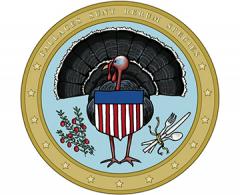
This Article From Issue
September-October 2006
Volume 94, Number 5
Page 390
DOI: 10.1511/2006.61.390
To the Editors:
The article by Shane Ross ("The Interplanetary Transport Network," May-June) made little mention of the origins of this field of study. Much of its foundation lies in my own work from 1986. In 1991 I provided the first demonstration of low-energy pathways within this network to rescue a failed Japanese lunar mission and transport their spacecraft, Hiten, to the Moon. This exciting rescue inspired much of the work Ross described. In 2004 the European Space Agency's SMART 1 spacecraft made use of another low-energy lunar route from my work.
An even more obvious omission concerns the description of the resonance motion of Comet Oterma. This follows directly from the paper "Resonance Hopping in Comets,” published by Brian Marsden of the Smithsonian Astrophysical Observatory and myself in the April 1997 issue of the Astronomical Journal.
Edward Belbruno
Department of Astrophysical Sciences
Princeton University
Dr. Ross responds:
I apologize to Dr. Belbruno that the article omitted his and Dr. Marsden's work. I agree that Dr. Belbruno's fascinating work on the Japanese Hiten mission helped establish low-fuel trajectories as a reality. My article was not intended as a comprehensive historical survey, and space limitations meant that many contributors to the field unfortunately had to be left unmentioned.
My hope was to convey the excitement of recent ideas in celestial mechanics and their deep mathematical relationship to other fields, such as chemistry, fluid mechanics and galactic dynamics. I imagine that ideas about low-fuel pathways will gain more attention in coming years and it is important to have a correct historical perspective on their development as well as their connections with other fields.

American Scientist Comments and Discussion
To discuss our articles or comment on them, please share them and tag American Scientist on social media platforms. Here are links to our profiles on Twitter, Facebook, and LinkedIn.
If we re-share your post, we will moderate comments/discussion following our comments policy.